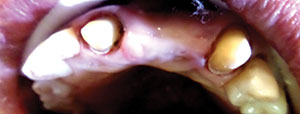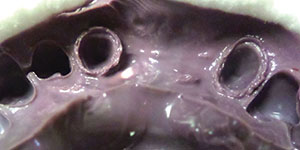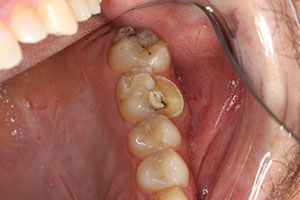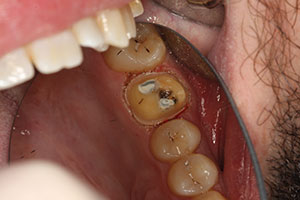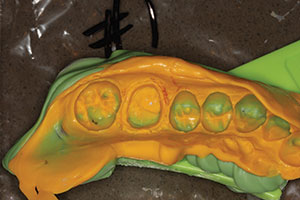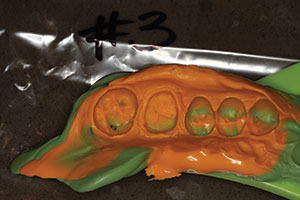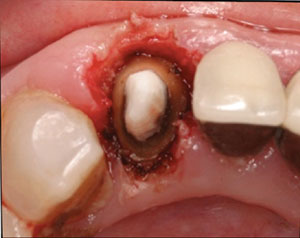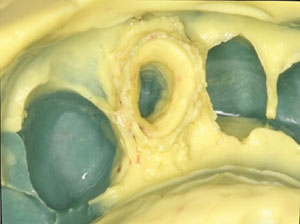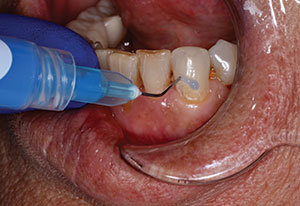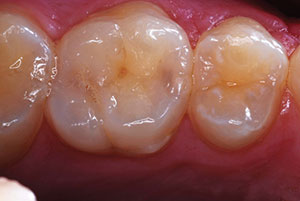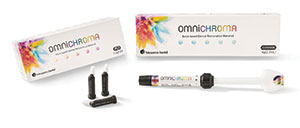INTRODUCTION
It is said that a first impression is everything, and this is especially true in the field of dentistry. The art and science of taking an excellent impression plays a critical role in the restorative process. Without a stable and accurate replica of the patient’s dentition and surrounding soft-tissue landmarks, creating an accurate and well-fitting dental prosthesis or lab-fabricated restoration is virtually impossible. Impression materials provide a straightforward and reliable method of producing the negative likeness of a patient’s tooth structure and surrounding soft-tissue landmarks needed to finalize a prosthesis or indirect restoration.
One major problem is that most dentists rely on only one impression material to address all clinical needs. Clinicians may be better served to stock more than one type of impression material to accommodate a variety of clinical situations.
This article will discuss the 3 most common classifications of impression materials: polyether (PE), vinyl polysiloxane (VPS), and a hybrid material called vinyl polyether siloxane (VPES). In addition, 3 mini case reports will be presented, focusing on the impression to give the clinician an understanding of the rationale that may be used when choosing the best impression material from different types of materials in various clinical situations. This article will assist the clinician in making optimal impression material choices.
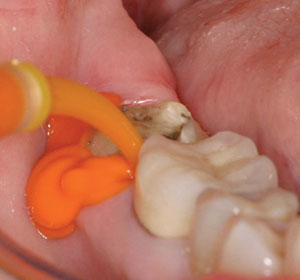 |
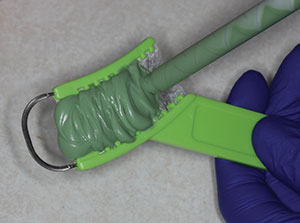 |
| Figure 1. Impression technique: Expressing light-body wash material around prep and teeth. | Figure 2. Impression technique: Filling the dual-arch tray with a heavy-body impression material. |
 |
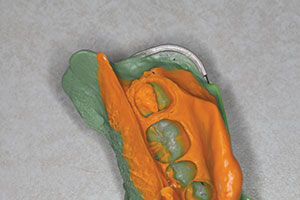 |
| Figure 3. Impression technique: Placing the loaded dual-arch tray into the mouth. | Figure 4. Impression technique: Final impression. |
Impression Technique
The impression technique utilized in all cases presented in this article is the heavy-body/light-body wash technique where the light-body or wash material is placed directly around the prep and adjacent teeth (Figure 1). Simultaneously, the impression tray is filled with a heavy-body material (Figure 2), and the heavy-body material is then immediately inserted into the mouth so that both materials polymerize together (Figure 3). (It should be noted that the working times of each category of material and set time of each category of material vary greatly. Manufacturer suggested working times and set times were, and always should be, closely followed.) Once the set time elapses, the impression was taken out of the mouth and evaluated under 3.5x loupe magnification (Figure 4).
CASE 1
A new patient presented without an anterior fixed partial denture (FPD) from teeth Nos. 7 to 11 (Figure 5), stating that it had fallen out some time ago. Going without teeth did not bother him personally; his real motivation for replacement was his wife’s unhappiness with his appearance. This patient wanted a solution to help mend his domestic disharmony.
CASE 1
|
The patient was on blood thinners and, while examining his teeth, it was noted that he produced a tremendous amount of saliva and gingival bleeding.
The existing margin of the old bridge was subgingival. The desired preparation design required us to keep the margins of the preparations at the same depth. Care was taken in the impression phase to minimize bleeding (Astringedent [Ultradent Products]) and saliva flow (controlled with cotton rolls) around the preparations.
Polyether
The biggest challenge this case posed was that of moisture control. A PE impression material (Impregum [3M]) was selected for use because of the inherent hydrophilic nature of this material. From a practical standpoint, the PE’s ability to perform in situations where moisture (water, saliva, blood, gingival fluids) is a challenge has set it apart from the other impression materials.1 As a hydrophilic material, PE has exceptional flow and wettability, both of which allow for a high degree of detail in the impression and the resulting working model. The international standard for detail reproduction requires impression materials to possess the ability to reproduce a line that is 0.02 mm in width or less (a human hair is 0.04 to 0.06 mm), a measurement that PE consistently surpasses in both wet and dry conditions.2
PE was the first of the 3 impression materials to be introduced commercially during the 1960s. The base generally consists of PE macromonomers along with glycol-based plasticizers and silica fillers. The accelerator supplies the cross-linking sulfonate, which is the catalyst for the reaction. Because there is no by-product resulting from polymerization, dimensional stability of the material is retained as the reaction occurs.1,2
While these traits are certainly laudable, PE impression materials exhibit high rigidity, a drawback that essentially can result in trouble removing the material from a patient’s mouth. Additives in the material, namely plasticizers, have been introduced to combat this rigidity issue, allowing for easier removal from the mouth after polymerization. PE impression materials have also historically been observed to have a bitter taste, causing more than a few complaints from patients throughout the years. However, advancements in the chemical makeup have effectively masked the taste with a minty flavor. Leading brands of PEs include Impregum Penta and Impregum Soft (3M) and Polyjel NF (Dentsply Sirona).
The outcome in this case was an excellent PE impression (Figure 6) that served as the foundation for the creation of a long-lasting FPD that this patient’s wife would appreciate for years to come.
CASE 2
A male patient fractured his molar in the upper left quadrant while eating breakfast (Figure 7). He was a very active and healthy patient and wanted his positive lifestyle reflected in his smile. He was worried that the tooth would need root canal therapy, or even removal. When he heard that the tooth could be returned to normal function with a crown, he expressed relief and wanted to get the restorative work started right away.
Because of the location and prep design (Figure 8) of the tooth, a more advanced VPS impression material would be used in this case.
CASE 2
|
Vinyl Polysiloxane
VPS impression materials were introduced commercially in the 1970s, about a decade after PEs. The base consists of a siloxane co-polymer with silane terminal groups along with coloring agents and silica fillers. The accelerator supplies a siloxane co-polymer with vinyl terminal groups along with chloroplatinic acid, which is the catalyst for the reaction.3 The chemical process is designated as an addition reaction; this is distinctive from other silicone materials because there are no by-products associated with the polymerization of these molecules.1,2,4 Similar to PEs, this clean reaction accounts for impressive dimensional stability of the material.
Some studies have indicated the presence of hydrogen gas during polymerization as a result of side reactions taking place within the base; however, the incorporation of palladium as a hydrogen absorber/scavenger, along with improved purification techniques and better proportioning of the materials, has negated this potential problem.2
VPS is naturally hydrophobic, which given the moist environment in which these materials are used, would seemingly qualify as a severe limitation when compared with PEs. However, the simple addition of an intrinsic surfactant has helped to overcome the hydrophobic nature of this material category, providing suitable wettability characteristics. Extrinsic surfactants may also be used on the patient’s tooth to accomplish the same end.2,4 An example of a direct tooth surfactant is B4 Surface Optimizer (Dentsply Sirona Restorative). It is a credit to the long list of strengths for VPS that deter any negative feedback regarding the proclaimed hydrophobic nature of the material.
The detail reproduction measurements match or exceed the international standard, and flow conditions are excellent, if not ideal.2 VPS materials have a desirable rigidity that provides a trouble-free removal process from the patient’s mouth. In addition, and unlike PE materials, VPS materials are naturally tasteless and odorless, though most on the market have been enhanced to contain some form of an artificial flavoring for the comfort of patients. Some leading brands of VPS materials include Imprint 4 (3M), EXAFAST (GC America), Take 1 Advanced (Kerr), Virtual XD (Ivoclar Vivadent), Honigum and StatusBlue (DMG America), AFFINITY VPS (CLINICIAN’S CHOICE Dental Products), SplashMax (DenMat), and many more.
Recent Advances in VPS Impression Materials
As a recent advancement in the VPS category, Dentsply Sirona has introduced Aquasil Ultra+ Smart Wetting impression material, which was used in case 2.
The tooth preparation was carried out with a subgingival margin. A diode laser (Picasso Lite [AMD LASERS]) was used to trough the soft-tissue circumferentially around the preparation. Then, a beautiful and detailed impression was taken of the final preparation (Figure 9).
The idea behind Aquasil Ultra+ Smart Wetting impression material is this: keep the framework of a high-functioning VPS and make it even better, without transitioning to the category of VPES hybrid. Aquasil Ultra was reformulated to produce a VPS impression material that does not compromise in any one area of performance. Specifically, the chemistry was altered so that the polymerization process would yield polyfunctional bonding between molecules, instead of the standard bifunctional, or linear, bonding presented with other silicone reactions. The end result is a matrix of “branched” macromolecules that offer stability in 2 key applications. First and most obviously, the newly reinforced structural design allows for outstanding dimensional stability, inherent material strength, and intraoral tear strength. Second, this improved molecular fortification makes possible the addition of more surfactants to the material without compromising strength. More surfactants equal better hydrophilicity.
The resulting material selection proved to be an excellent one for the patient presented in case 2. A worry-free impression for a worry-free restoration.
CASE 3
A female patient fractured her lower incisor at the gumline and wanted to save the tooth. Endodontic treatment was done and a post-and-core was then placed in the tooth. A circumferential subgingival margin was placed at a depth that provided a minimum of 2.0 mm of tooth structure (ferrule effect) to retain and support the crown (Figures 10 and 11). Because of the depth of the margin, the presence of crevicular fluid presented one of the challenges in capturing an accurate and detailed impression. In addition, bleeding, although minimal, was another factor that could have potentially compromised the outcome and therefore played a role in final impression material selection as well. A VPES was selected for the impression material of choice in case 3.
CASE 3
|
Hybrid (VPES)
VPES impression materials are the most recent subset of dental impression materials available on the market, having made their commercial debut in the last few years. The developmental aim is very direct: combine the desired attributes of both leading categories of impression materials. Simply put, why settle for a PE or VPS when you can reap the benefits of both?
The chemical composition of a VPES is highlighted by a PE co-polymer that is cross-linked with an organo-hydrogen polysiloxane and a VPS co-polymer. A platinum catalyst is then employed to yield the final molecule, a vinyl siloxanether.3 The resulting material is professed to have the premium qualities of a VPS (stability, tear strength, elastic recovery) coupled with the natural hydrophilicity and flowability of a PE.1,4 Theoretically, the hybrid material represents the ultimate optimization of traits from 2 well-established and reliable impression materials. In reality, the proposed synergistic effect of combining the PE and VPS has not been as readily apparent as expected. While studies can confirm that the final material is adequate to provide dentists with a third comparable option in today’s market, such a hybrid creation has not yet been shown to be greater than the regular sum of its 2 parts. However, this is not entirely surprising, since the era of the VPES is still in its infancy; more clinical studies are required to make a true comparison of the VPES to its predecessors. For now, the hybrid’s performance with respect to detail reproduction, wettability, tear strength, etc, is very much in line with what has been observed in PE and VPS products. The leading brand in this category of impression materials is EXA’lence (GC America) and was the material of choice for this case.
While this is an impression for which more could go wrong than right, the material selection for the impression was a major part of the successful outcome of the impression itself (Figure 12).
IN SUMMARY
Currently, the 3 most common impression materials are PE, VPS, and VPES hybrid. Each of these material categories exhibits slight advantages over the others, but all 3 are dependable candidates in terms of overall quality. The ever-present competitive streak in the field of dentistry seems to have ensured that no one product outstrips its competitor. What once may have been glaring disadvantages of one material have been more or less mitigated by the need for manufacturers to stay relevant. And so, while the PE, VPS, and hybrid categories differ in their chemical makeup, the manufacturers have provided clinicians with 3 comparable options to choose from, depending upon individual clinician preference and the clinical situation at hand.
Clinicians face daily challenges when preparing for dentures, partials, crowns, bridges, and implant prostheses that, because of the limitations of the impression materials in the past, were often insurmountable. Advancement in the chemical makeup of each impression material category now give the dentist options that can work well in cases that are routine or in the most challenging of clinical situations. It is up to the clinician to understand the different characteristics of the various impression materials and to choose one that is best matched to the specific clinical situation at hand. When this is accomplished, the most accurate reproduction of the dentition and surrounding oral landmarks can be achieved, and the outcome will be the creation of the best possible final prosthesis.
References
1. Burgess JO. Impression material basics. Inside Dentistry. October 2005. dentalaegis.com/id/2005/10/impression-material-basics. Accessed December 6, 2016.
2. Mandikos MN. Polyvinyl siloxane impression materials: an update on clinical use. Aust Dent J. 1998;43:428-434.
3. Sun M. A Laboratory Evaluation of Detail Reproduction, Contact Angle, and Tear Strength of Three Elastomeric Impression Materials [master’s thesis]. Bloomington, IN: Indiana University School of Dentistry; 2011.
4. Re D, De Angelis F, Augusti G, et al. Mechanical properties of elastomeric impression materials: an in vitro comparison. Int J Dent. 2015;2015:428286.
Dr. Simos maintains private practices in Bolingbrook and Ottawa, Ill. He received his DDS degree at Chicago’s Loyola University and is the founder and president of the Allstar Smiles Learning Center and client facility (Bolingbrook), where he teaches postgraduate courses to practicing dentists on cosmetic dentistry, occlusion, and comprehensive restorative dentistry. He is an internationally recognized lecturer and leader in cosmetic and restorative dentistry. He can be reached at cmesmile50@gmail.com, via the website allstarsmiles.com, and on Twitter @allstarlc1.
Disclosure: Dr. Simos reports no disclosures.
Related Articles
Anterior Tooth Replacement Made Easy: A Conservative and Predictable Direct Technique



